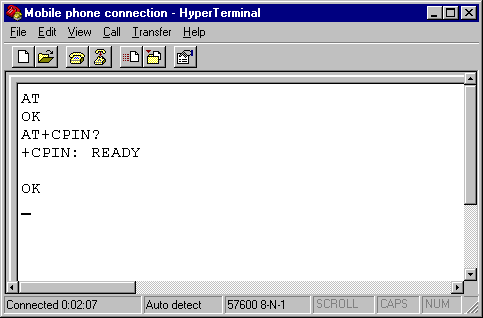Run Hyperterminal
- Hyperterminal Run Command In Windows 7
- Run Hyperterminal From Command Line
- Run Hyperterminal On Windows 10
Loading Quotes. HyperTerminal Windows 7, 8, 10, XP, and Vista terminal emulation software is now available. Some uses of HyperTerminal Private Edition:. Use a TCP/IP network to connect to systems on the Internet or your network using Telnet or Secure Shell (SSH). Use a Dial-Up modem to dial into modem based systems. Talk directly to many different types of devices using RS232 serial COM ports. Emulate many different terminal types including ANSI, ANSIW, VT100, VT100J, VT52, VT220, VT320, TTY, Minitel, and ViewData.
I have Windows 8 Pro, and I don't have the HyperTerminal program installed by default. Additionally, I don't see any option to install it via Windows feature install. Additionally, I don't see any option to install it via Windows feature install.
Transfer files with Xmodem, Ymodem, Zmodem, and Kermit. For a more powerful alternative to Hyper Term, please visit our page if you are interested in advanced scripting capabilities or additional terminal emulation options. Version: 7.0 System Requirements: Windows XP, Vista, Windows 7, Windows 8, Windows 10 Windows Server 2003, 2008, 2012, 2016.
You don't make a C program that runs through hyperterminal, you make a C program that opens the serial port itself and sends the AT commands and reads the replies. Are you sure you want to use C rather than C??

If you are using C then the WIN32 API function calls you will need to look into are BuildCommDCB Fills a specified DCB structure with values specified in a device-control string. BuildCommDCBAndTimeouts Translates a device-definition string into appropriate device-control block codes and places them into a device control block. ClearCommBreak Restores character transmission for a specified communications device and places the transmission line in a nonbreak state. ClearCommError Retrieves information about a communications error and reports the current status of a communications device. CommConfigDialog Displays a driver-supplied configuration dialog box. EscapeCommFunction Directs a specified communications device to perform an extended function. GetCommConfig Retrieves the current configuration of a communications device.
GetCommMask Retrieves the value of the event mask for a specified communications device. GetCommModemStatus Retrieves modem control-register values. GetCommProperties Retrieves information about the communications properties for a specified communications device.
GetCommState Retrieves the current control settings for a specified communications device. GetCommTimeouts Retrieves the time-out parameters for all read and write operations on a specified communications device. GetDefaultCommConfig Retrieves the default configuration for the specified communications device. PurgeComm Discards all characters from the output or input buffer of a specified communications resource. SetCommBreak Suspends character transmission for a specified communications device and places the transmission line in a break state. SetCommConfig Sets the current configuration of a communications device. SetCommMask Specifies a set of events to be monitored for a communications device.
Hyperterminal Run Command In Windows 7
SetCommState Configures a communications device according to the specifications in a device-control block. SetCommTimeouts Sets the time-out parameters for all read and write operations on a specified communications device. SetDefaultCommConfig Sets the default configuration for a communications device. SetupComm Initializes the communications parameters for a specified communications device.
TransmitCommChar Transmits a specified character ahead of any pending data in the output buffer of the specified communications device. WaitCommEvent Waits for an event to occur for a specified communications device. Help on these available. You will also need the general IO functions below CloseHandle Closes an open object handle.

Run Hyperterminal From Command Line
CreateFile Creates or opens a file, directory, physical disk, volume, console buffer, tape drive, communications resource, mailslot, or named pipe. ReadFile Reads data from a file, starting at the position that is indicated by a file pointer. This function can operate synchronously and asynchronously. ReadFileEx Reads data from a file asynchronously. WriteFile Writes data to a file at a position that a file pointer specifies. This function can operate synchronously and asynchronously.
Run Hyperterminal On Windows 10
WriteFileEx Writes data to a file. This function reports the completion status asynchronously by calling a specified completion routine when writing is completed or canceled and when the calling thread is in an alertable wait state. Help on these available. If rather than C you are going to use C or C# then are other options open to you if you use the.NET framework.